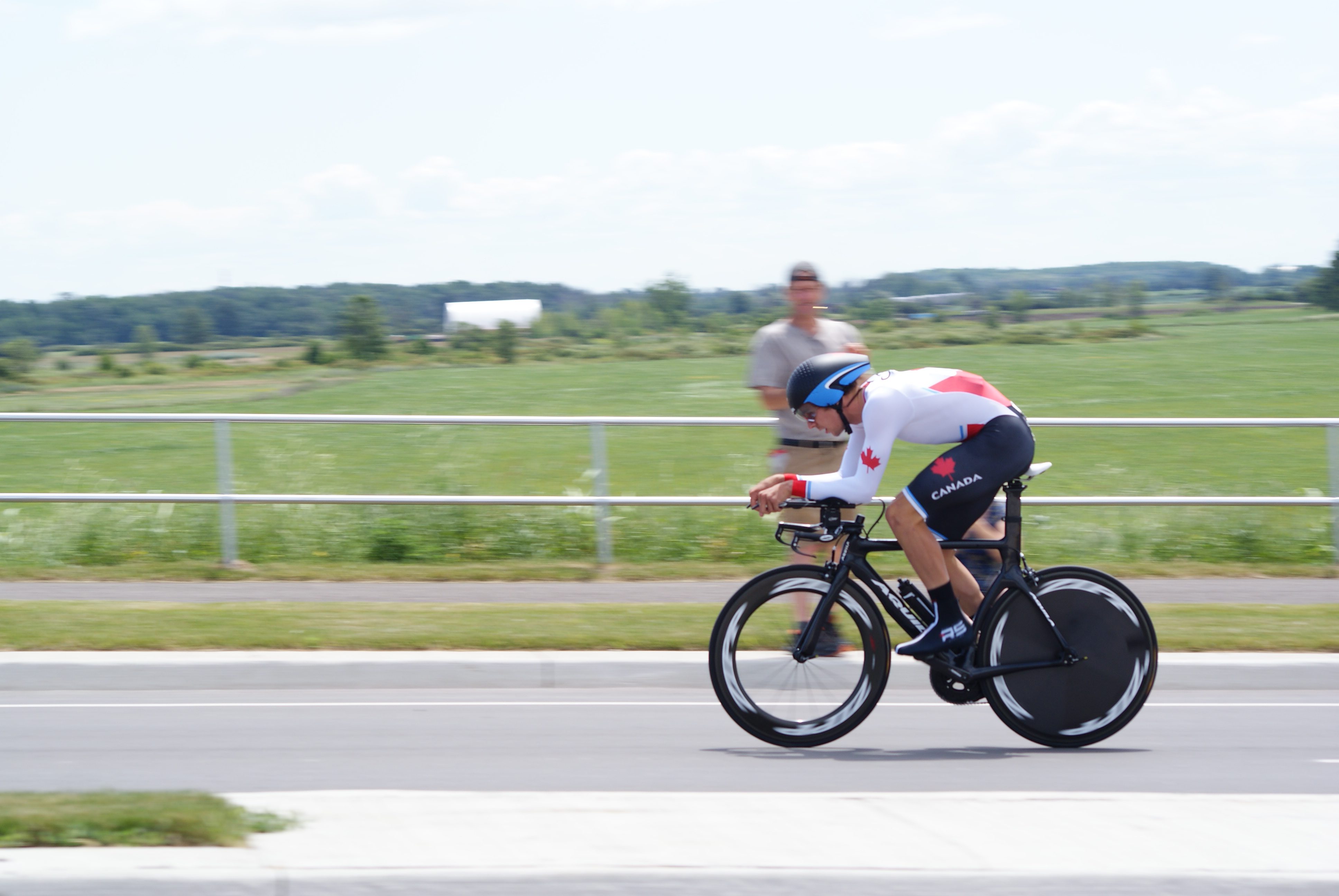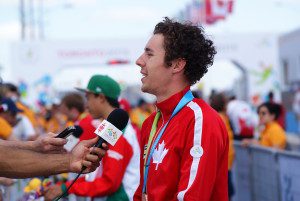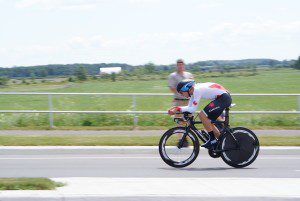Time Trial Triathlon Tips

Pan Am bronze medallist Sean Mackinnon offers some background and tips gleaned from his podium finish at Toronto2015.

He was the youngest competitor in the Pan Am games time trial by two years. He was also competing in his first 40 km time trial event ever. But that didn’t seem to hold 19-year-old Sean Mackinnon from Hamilton back too much – just three days after his team pursuit team (Mackinnon, Remi Pelletier-Roy, Ed Veal, Adam Jamieson and Eric Johnstone) took the bronze medal at the Pan Am games, he took the bronze in the Individual Time Trial behind countryman Hugo Houle and Mexico’s Ignacio Prado. He averaged just over 47 km/h for the 37 km race, clocking a time of 46:51.
While he’s been part of the national cycling program for the past three years, Mackinnon is a relative newcomer to the cycling world. The former triathlete turned to cycling at 16 after finishing fourth at the Ontario Games and second at the Ontario Provincial draft-legal championships as a 15-year-old.
We caught up with Mackinnon (he wasn’t too hard to reach – his father is the senior editor of Triathlon Magazine Canada) to get some insight on his preparation for the time trial:
While I hadn’t ever competed in a time trial that long, I was looking forward to the opportunity to test myself over 40 km at the games. As part of Cycling Canada’s NextGen program, I’ve been focussed on the team pursuit since last September, so we spend a lot of time on the track.
Even though we ride the track, we spend a lot of time training and racing on the roads to enhance our overall cycling fitness. We do lots of road camps through the winter doing rides of between four and seven hours with lots of climbing, with recovery days mixed in between each of those hard efforts. I added a “camp” of my own to the mix in March, too, where I spent a week in Los Angeles staying with my dad’s former triathlon buddy, Andrew MacNaughton, and I buried myself with a few 200+ km training days with over 10,000 feet of climbing. April and May were spent training and racing over in Europe and ended with a final test at An Post Ras (the Tour of Ireland) that tested our fitness and served as our final big test before our Pan Am run.
In June, during a 10-day track training camp at the new Mattamy Homes National Training Center velodrome in Milton, I spent some time with our team physiologist, Mike Patton, on my track position using the Alphamantis system. The biggest change that Mike made for me had nothing to do with the bike – we spent a lot of time working on my shoulder position and how I held my head to ensure that I was getting the most benefit from my aero helmet. We did one last road camp at the end of June in Virginia that included lots of long days in the saddle with lots of climbing.
All that strength work, combined with the speed I was doing on the track, proved invaluable for the time trial effort. The position on my Aquila is similar to how I am set up on my track bike, but with some additional spacers under the aero pads so I sit a bit higher. I tried to get out on my TT bike as often as I could over the last month before the games, but it was mostly easy rides getting used to the position. I left the hard interval work for the track.
So it wasn’t really until the day before the time trial that I really did any full out efforts at my goal pace and wattage. My “activation” workout the day before the race included a set of 3 x 5 minutes at my goal wattage with lots of recovery in between (about 10 minutes).

Despite going out way too hard for the first half of the time trial (over 50 km/h), I was able to hit pretty close to that goal wattage on race day. I really suffered over the last 10 km of the ride and felt like I was hanging on for dear life over the last six km into the headwind. I was thrilled to get the bronze medal and have the chance to stand on the podium with Hugo.
Sean Mackinnon’s TT tips:
- Your body position is critical. During the Pan Am race I had a coach in a car behind me who was passing all the information about the road ahead to me. That allowed me to keep my head down almost the entire way, which put my aero helmet in the perfect position for the air to flow straight along my back. My TT position isn’t as low as my track position, but it allows me to stay on the bars all the way and to provide the most power.
- Don’t be afraid to do some activation sets even the day before your race. As a triathlete my pre-race workouts were typically a lot easier. In cycling we usually do some race efforts the day before our race.
- You need a bit of everything for the time trial – strength, power and speed all need to be part of your program.
